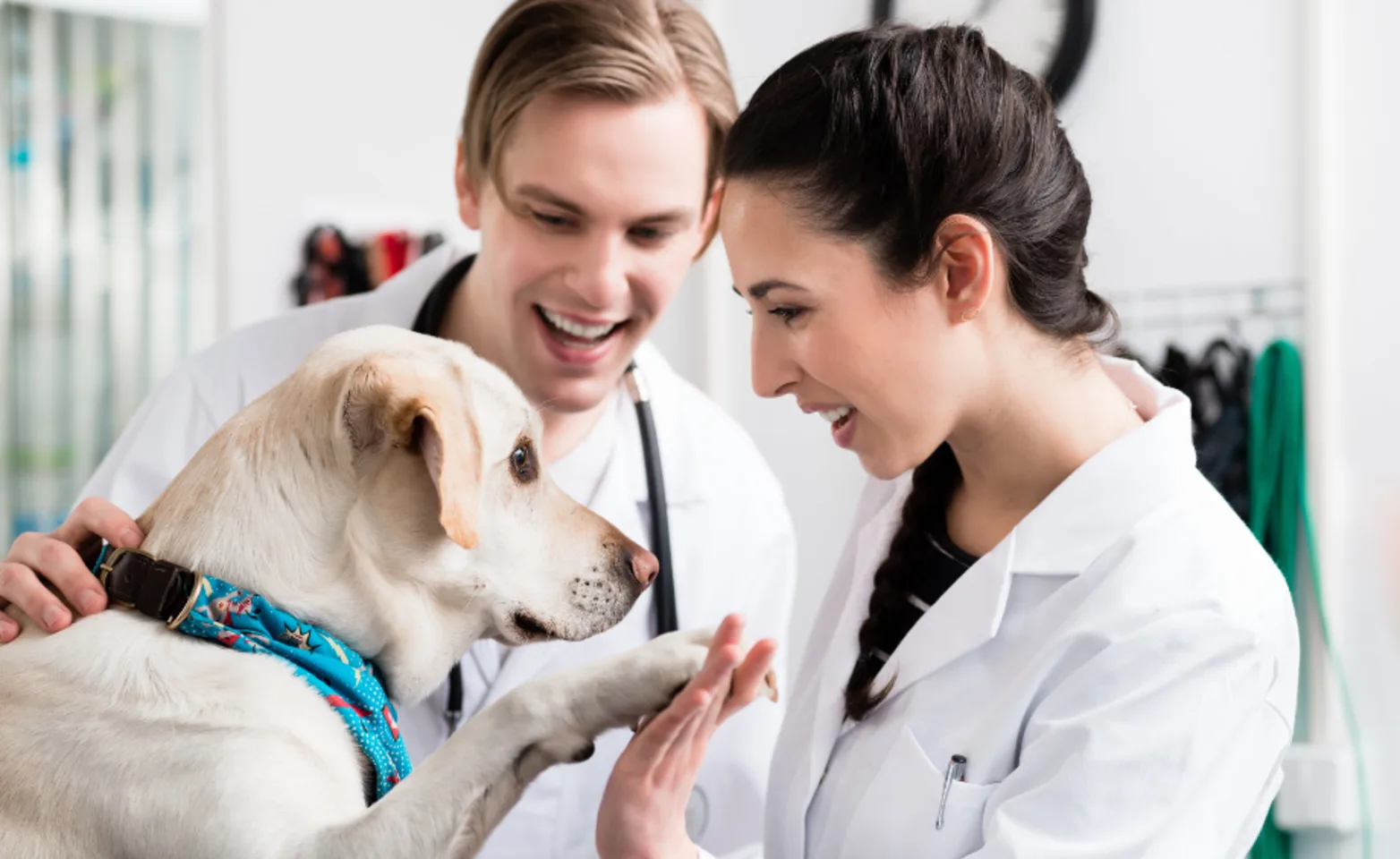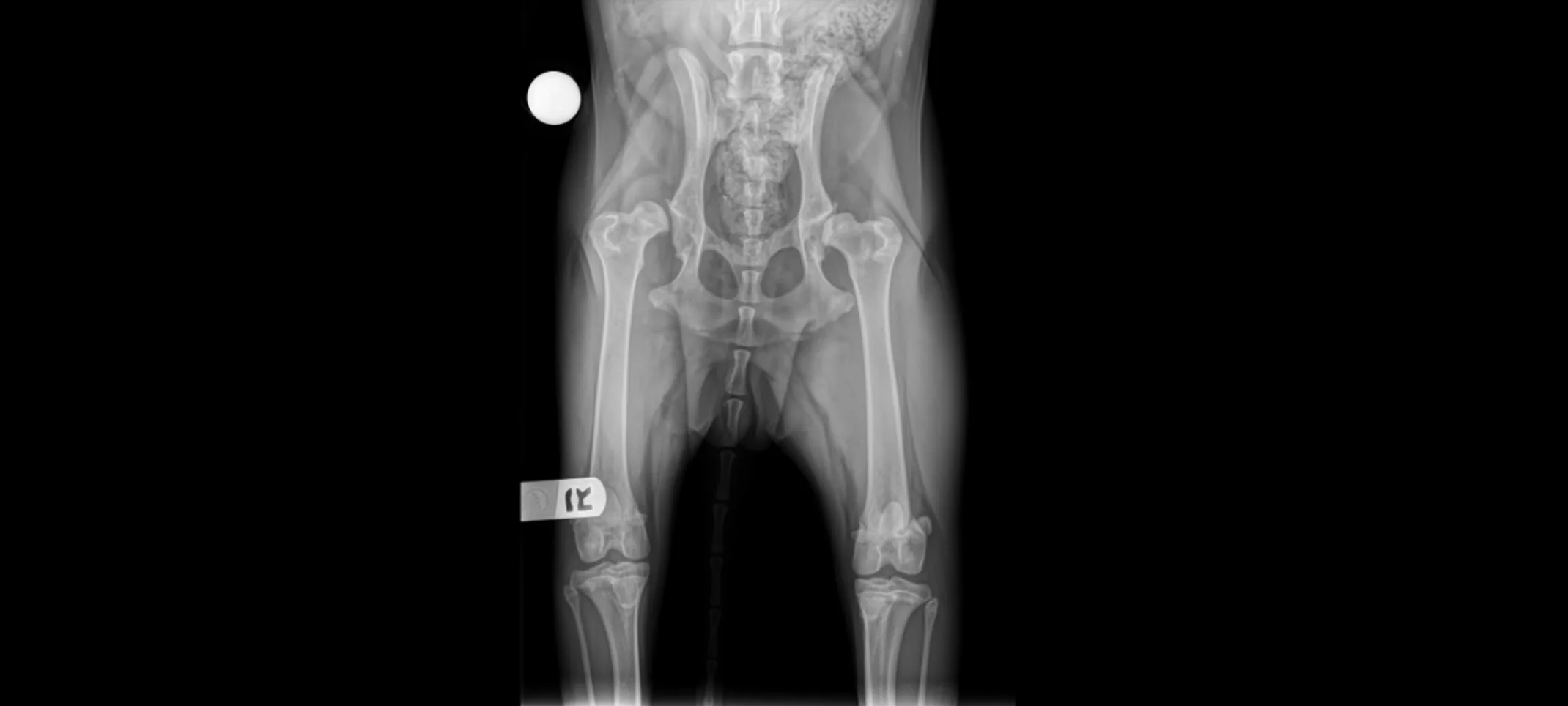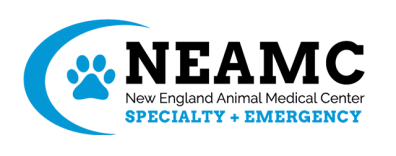New England Animal Medical Center

Total Hip Replacement Surgery
What is Total Hip Replacement Surgery?
Total hip replacement involves removing the diseased/degenerative and painful portion of the hip joint and replacing it with an artificial hip joint prosthesis to relieve pain, restore range of motion and provide optimal function. Total hip replacement has been utilized in dogs over the past 30 years, and through the advancements in materials and medical science, it is a good option for pets that have debilitating disease in their hips.

The KYON Implant System
The stem material is composed of titanium metal with a titanium alloy that is porous coated. This is a cementless system in which the bone will grow on the porous coated stem and ultimately hold it in place. The cup consists of a double-shell design to allow the bone to integrate into the material and liner is a PEEK (polyether ether ketone), which is a flexible strong wear resistant material made to last a lifetime. The head is a smooth ceramic material in conjunction PEEK cup, providing a smooth and near frictionless hip motion.
What conditions are addressed with total hip replacement surgery?
Some traumatic conditions such as hip luxation, or fractures of the upper femur can be treated with a total hip replacement. However, the most common condition addressed with this surgery is canine hip dysplasia. The hip joint is a “ball and socket” joint. The ball is the head of the femur, and the socket is part of the pelvic bone, the acetabulum.
Normally, the head of the femur fits very tightly within the acetabulum. In hip dysplasia, the joint does not fit together snugly, causing instability. As a result, the joint will partially subluxate or move in and out of the socket. This may cause cartilage damage and severe arthritis in dogs as early as one year of age.
Canine hip dysplasia is a chronic, debilitating disease that only gets worse with time and can lead to lifelong osteoarthritis of the hip joint. This leads to limited activity, increased weight, and increased shifting of weight to other limbs and joints – which ultimately can progress to strain and injury. Total hip replacement is the gold standard of treatment for canine hip dysplasia.
Signs of hip dysplasia
Reluctance to exercise
Bunny hop
Swaying gait or wiggling of hips while walking
Short steps in either hind leg
Slowness lifting rear end up off the floor
Slowness lying down
Difficulty climbing stairs or jumping
Limping (most prevalent first thing in the morning)
Post operative care for total hip replacement surgery
Total hip replacement post-operative care will be discussed with you in detail prior to and after your pet’s surgery. Restricted activity is of utmost importance and generally lasts 10-12 weeks depending on your dog’s specific condition.
Follow up rechecks are very important to assess and determine the degree of which the implants have integrated into the bone. These assessments are performed under sedation at two months and six months post-operatively. Long-term monitoring of the hip is recommended as well with every-other-year exams and radiographs.
Advanced Care at NEAMC
NEAMC and our board-certified surgeon, Dr. Townsend, can offer treatment options for hip diseases that cause progressive, long-term debilitation in dogs. Working with your primary care veterinarian, NEAMC has a skilled surgery team that is available to assist in the diagnosis and treatment plan best suited for you and your pet.


